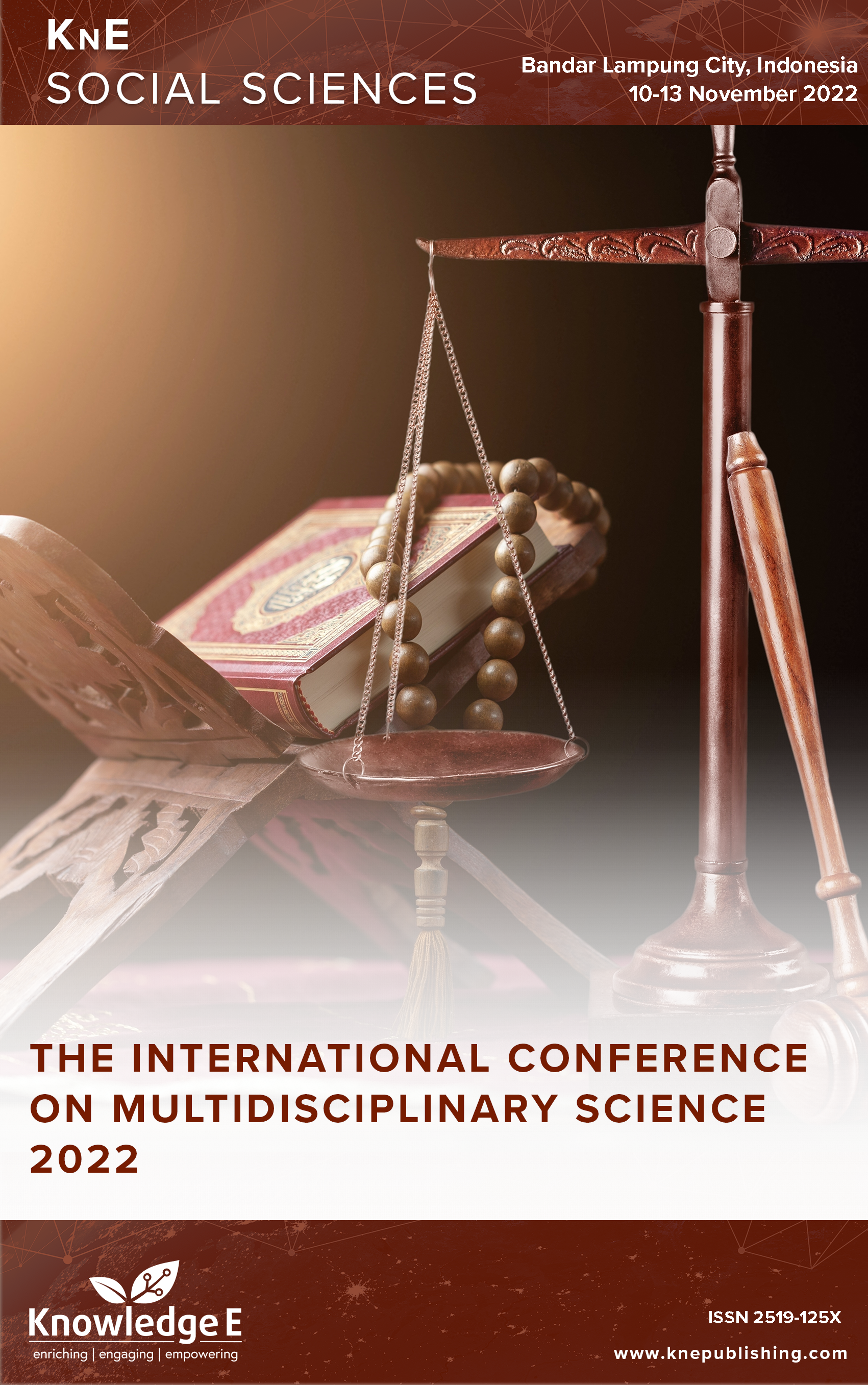Interreligious Education as an Approach to End Racism and Discrimination
DOI:
https://doi.org/10.18502/kss.v8i16.14035Abstract
This study aims to explain that interreligious education can be used as an approach in dealing with diversity to end discrimination and racism in a multiethnic society. Interfaith education can increase students’ fears about changing religions or losing their own beliefs, as well as foster an understanding of other religions beyond history and culture, while allowing individuals to maintain their own beliefs. In addition, interreligious education must emphasize universal values or principles, such as peace and tolerance. It is a type of qualitative research with a library research model. Research data comes from related books and articles on interfaith education as an approach to ending discrimination and racism. Collection techniques were carried out through reading literature or written sources such as books, previous research, journals, and articles related to the research title. Data analysis with the content analyst. The results of this study state that interfaith education lays the foundation for education as an approach to fighting racism and discrimination. Thus, there is a need to consider religion and education in everyday life to promote more holistic interfaith education and build harmonious coexistence.
Keywords: interreligious education, racism, discrimination, common principals, harmonious co- existence, multiethnic society.
References
[2] BadrulHisham A, Mohd Khambali Hambali K. Konsep Roh Suci Menurut Islam dan Kristian (The Concept of ‘Holy Spirit’ in Islam and Christianity). Afkar. 2018;20(1):85- 108.
[3] Baldwin J. Culture, prejudice, racism, and discrimination. Oxford Research Encyclopedia of Communication. 2017. https://doi.org/10.1093/acrefore/9780190228613.013.164.
[4] Bakar O. Interfaith dialogue as a new approach in Islamic education.” ICR J.
[5] 2010;1(4):700-714
[6] Bertram-Troost GD, de Roos SA, Miedema S. Religious identity development of adolescents in religious affiliated schools. A theoretical foundation for empirical research. J Beliefs Values. 2006;27(3):303–314.
[7] Engberg ME, Hurtado S. Developing pluralistic skills and dispositions in college: Examining racial/ethnic group differences. J Higher Educ. 2011;82(4):418.
[8] Every D, Perry R. The relationship between perceived religious discrimination and self-esteem for Muslim Australians. Aust J Psychol. 2014;66(4):241-248.
[9] Fox J. “Religious discrimination: A world survey”. J Int Affairs. 2007;61(1):47-67.
[10] Gandhi M. The story of my experiments with truth. Boston: Beacon Press; 1957.
[11] He J, He L, Wen Z, Xuanhua N, He M. “Discrimination and social exclusion in the outbreak of COVID-19”. Int J Environ Res Public Health. 2020;17(8):2933, 2-4.
[12] Jawoniyi O. “Rethinking the religious education curricula in Nigerian Schools.”
[13] J Study Religion. 2009;22(2):65.
[14] Lama D. Buddhist wisdom. Lion’s Roar: N.P.P; 2016.
[15] Hull M, John. “The contribution of religious education to religious freedom: A global perspective.” in religious education in schools: School education in relation with freedom of religion and belief, tolerance, and non-discrimination. International Association for Religious Freedom (IARF). 2002:6- 7.
[16] Mohd Khambali Hambali K, Abdul Rahman NF, Senin N, Haji D, Sri R. “Storytelling as a peace education in interfaith dialogue: An experience among selected university students.” Afkar. 2019;21(1):111-138.
[17] Mohd Khambali Hambali K, Sintang S, Awang A, Mat K, Khairul N, Abdul Rahman NF, Wan R, Wan A, Senin N, Zainal A, Azmil I, Ahmad Z, Wan A, Wan Zailan K, Ruzman MN. “Al- Wasatiyyah in the practice of religious tolerance among the families of new muslims in sustaining well-being society.” Humanomics. 2017;33(2):211-220.
[18] Wielzen R, Duncan, Avest. Ina ter. Interfaith education for all: theoretical perspectives and best practices for transformative action. Sense Publishers: Boston, MA, USA; 2017.
[19] Muhammad S, Abu-Nimer M. Interfaith dialogue: A guide for Muslims. Herndon: The International Institute of Islamic Though; 2007.
[20] Sharaievska I, Stodolska M, Shinew KJ, Kim J. “Perceived discrimination in leisure settings in Latino urban communities”. Leisure/Loisir. 2010;34(3):295-326.
[21] Shehu F. “Inter-religious dialogue and contemporary peace building: From hostility
[22] to mutual respect and better understanding.” Beder J Humanit. 2015;1(3):59-76.
[23] UNESCO. ‘Berinvestasi dalam Keanekaragaman Budaya dan Dialog Antarbudaya.’ Laporan Dunia UNESCO. 2017. Retrieved: 17 August 2022.
[24] Unesco.org/newfile/admin/Multimedia/HQ/CLT/pdf.
[25] Wani H, Abdullah R, Chang LW. “An Islamic perspective in managing diversity.” Religions. 2015;6:642–656.
[26] Wajdu F. “Intercultural communication in the construction of Islamic Teaching.”
[27] Palakka: Media and Islamic Communication. 2021;2(1):20-30.
[28] Cheetham D. The university and interfaith education. Stud Interrelig Dialogue. 2005;15(1):16–35.
[29] Engebretson K, De Souza M, Durka G, Gearon L. International handbook of interreligious education. Vol. 4. Springer Science & Business Media; 2010.
[30] Moyaert M. On the role of ritual in interfaith education. Relig Educ. 2018;113(1):49–60.
[31] Kirkinis K, Pieterse AL, Martin C, Agiliga A, Brownell A. Racism, racial discrimination, and trauma: A systematic review of the social science literature. Ethn Health. 2021;26(3):392–412.
[32] He J, He L, Zhou W, Nie X, He M. Discrimination and social exclusion in the outbreak of COVID-19. Int J Environ Res Public Health. 2020;17(8):2933.
[33] Gandhi M. The story of my experiments with truth: An autobiography. e-artnow; 2021.

